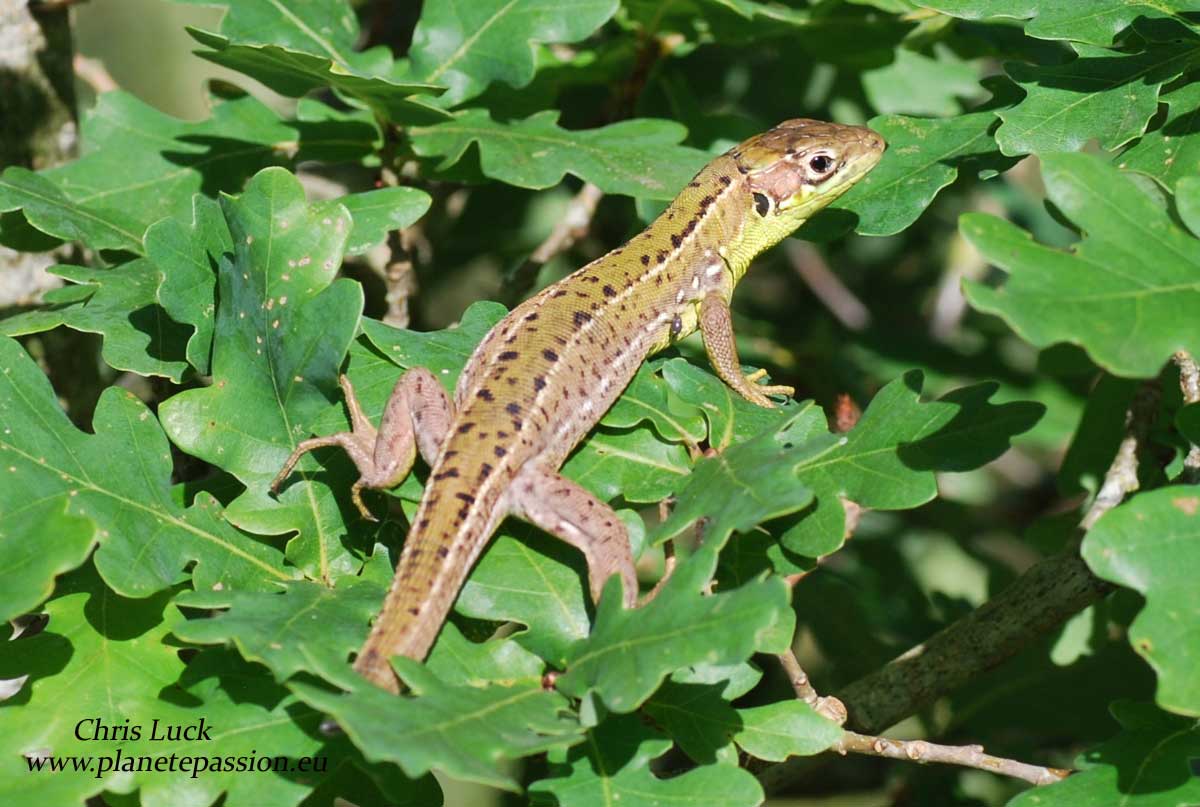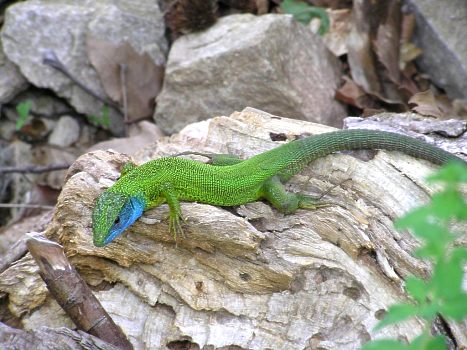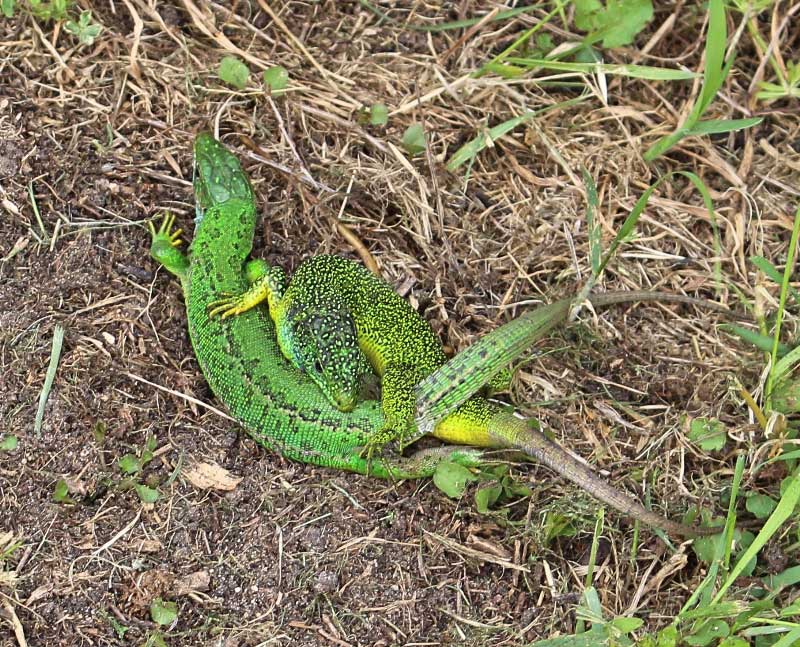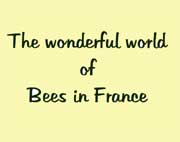Green Lizard
Lacerta viridis / Lacerta bilineata
Lézard Vert
Green lizards in France can measure up to 40 cm in length.
Two thirds of the total length is tail, which is wide at the base, becoming cylindrical towards the end, large flat head and rounded nose. The hearing organs are situated at the rear of the head and are in the form of a vertical oval which are as large as the eyes and clearly visible. The body is broad backed with folds or pleats. The male is almost entirely green or brownish green, speckled with black and lemon yellow. The female often has two or four longitudinal yellowish lines running down the back outlined with black specks. During the breeding period the males’ throat and part of the head are blue and the stomach and the inside of the legs are bright yellow and turquoise. Juveniles are almost brown, with a yellowish belly and two to four pale, longitudinal lines along the flanks. Sub-adults also have these lines, together with several small brown spots on their backs.
Temperature is very important
for this lizard and activity usually requires about 15°C. with 25 to 30°C being preferred. They are limited in France to south of latitude 49°, generally south of the Siene although climate change may encourage an expansion northwards.
The colours of this lizard never fail to impress
They prefer areas of dense bushy habitat that are not over managed and have plenty of sunlight. Hedgerows, brambles and the edges of woodland are typical, although scrubby wetlands and similar areas are also favoured if there is sufficient cover. They are superb climbers, whether it is in trees and bushes or on stone walls which is where they catch most of their prey of insects including butterflies, although they will also eat fruits, small micro mammals, birds’ eggs and even baby birds in nests. They are also known to swim occasionally. They will often completely ignore the presence of humans, yet at other times they will flee a short distance at the slightest movement where they will often stay and observe you. As with the Oscillated Lizard, they can give quite painful "bites" when handled but this is not in any way dangerous, not even to a small child.
Reproduction
Violent fights take place between males before mating (in May/June).
Females lay 7 to 20 eggs at the end of May with the possibility of a second laying in June-July, depending on the climate. Incubation lasts from 50 to 105 days.
Hibernation
Hibernation is from October until April in old rodent burrows or any other convenient underground space that provides protection from the cold. Lifespan is perhaps 10 years with longer being possible but predation is commonplace.
Species in local decline due to habitat destruction, pollution and agricultural practices.
Green Lizard
Lacerta viridis / Lacerta bilineata
Lézard Vert





